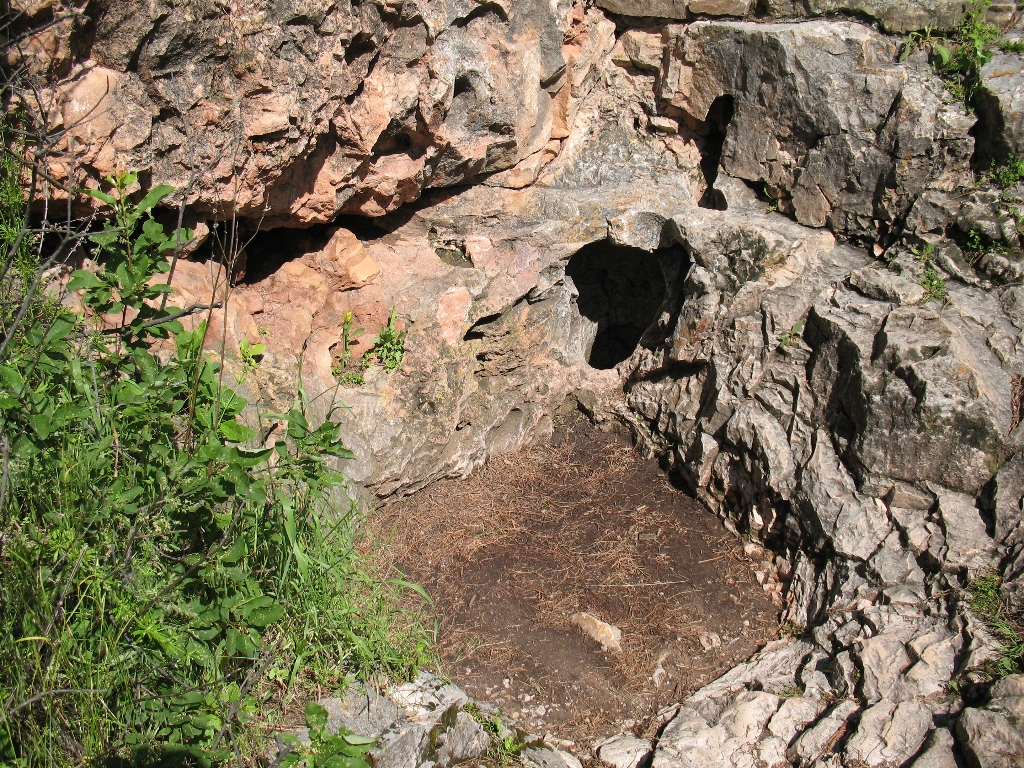
Geologic age: Mississippian
Go down the central stairs of the visitor center and exit the building through the double doors directly ahead. Once outside, follow the trail 225 yards to the cave's natural entrance at the end of the sidewalk. You can also get to the natural entrance by following the gravel path from the picnic area back toward the visitor center. The natural entrance is about 150 yards down this trail.
Limestone is a sedimentary rock deposited in oceans. It is mainly composed of calcium carbonate. Pahasapa Limestone is gray to light tan and forms steep slopes or cliffs.
Notice that the cave's natural entrance formed in a ravine. Can you think why?
Go down the central stairs of the visitor center and exit the building through the double doors directly ahead. Once outside, follow the trail 225 yards to the cave's natural entrance at the end of the sidewalk. You can also get to the natural entrance by following the gravel path from the picnic area back toward the visitor center. The natural entrance is about 150 yards down this trail.
Limestone is a sedimentary rock deposited in oceans. It is mainly composed of calcium carbonate. Pahasapa Limestone is gray to light tan and forms steep slopes or cliffs.
Notice that the cave's natural entrance formed in a ravine. Can you think why?
Is there something we missed for this itinerary?
Itineraries across USA

Acadia

Arches National Park

Badlands

Big Bend

Biscayne

Black Canyon Of The Gunnison

Bryce Canyon

Canyonlands

Capitol Reef

Carlsbad Caverns

Channel Islands

Congaree

Crater Lake

Cuyahoga Valley

Death Valley

Dry Tortugas

Everglades

Gateway Arch

Glacier

Grand Canyon

Grand Teton

Great Basin

Great Smoky Mountains

Guadalupe Mountains

Haleakalā

Hawaiʻi Volcanoes

Hot Springs

Indiana Dunes

Isle Royale

Joshua Tree

Kenai Fjords

Kobuk Valley

Lassen Volcanic

Mammoth Cave

Mesa Verde

Mount Rainier

North Cascades

Olympic

Petrified Forest

Pinnacles

Rocky Mountain

Saguaro

Shenandoah

Theodore Roosevelt

Virgin Islands

Voyageurs

White Sands

Wind Cave

Yellowstone

Yosemite

Zion